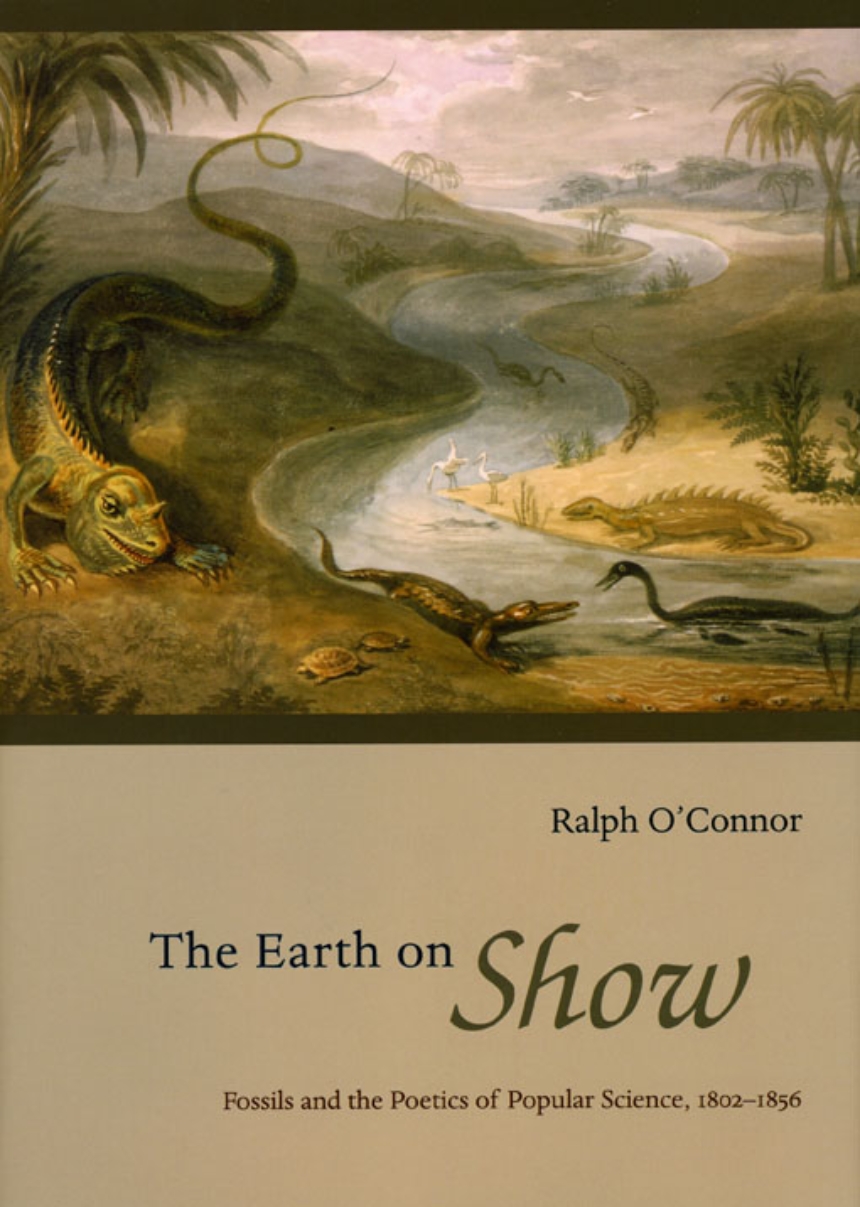The Earth on Show
Fossils and the Poetics of Popular Science, 1802-1856
The Earth on Show
Fossils and the Poetics of Popular Science, 1802-1856
Shrewd science-writers, O’Connor shows, marketed spectacular visions of past worlds, piquing the public imagination with glimpses of man-eating mammoths, talking dinosaurs, and sea-dragons spawned by Satan himself. These authors—including men of science, women, clergymen, biblical literalists, hack writers, blackmailers, and prophets—borrowed freely from the Bible, modern poetry, and the urban entertainment industry, creating new forms of literature in order to transport their readers into a vanished and alien past.
In exploring the use of poetry and spectacle in the promotion of popular science, O’Connor proves that geology’s success owed much to the literary techniques of its authors. An innovative blend of the history of science, literary criticism, book history, and visual culture, The Earth on Show rethinks the relationship between science and literature in the nineteenth century.
542 pages | 8 color plates, 89 halftones, 2 tables | 7 x 10 | © 2007
Earth Sciences: History of Earth Sciences
History: British and Irish History
Literature and Literary Criticism: British and Irish Literature
Reviews
Table of Contents
List of Abbreviations
Introduction: Science as Literature
Part I: Building the Story
1. Enter the Mammoth
2. William Buckland: Antiquary and Wizard
3. Lizards and Literalists
4. Lyell Steps In
Part II: Staging the Show
5. Marketing Geology
6. Polite Science and Narrative Form
7. Time Travel and Virtual Tourism in the Age of John Martin
8. Literary Monsters
9. Scenes and Legends from Deep Time
10. Hugh Miller and the Geologic Diorama
Epilogue: New Mythologies of the Ancient Earth
Appendix: Currencies, and Sizes of Books
Works Cited
Credits
Index
Awards
British Society for Literature and Science: BSLS Book Prize
Won
Society for Literature, Science, and the Arts: Michelle Kendrick Memorial Book Prize
Won
History of Science Society: Pfizer Award
Short Listed/Finalist
History of Science Society: Suzanne J. Levinson Prize
Short Listed/Finalist
